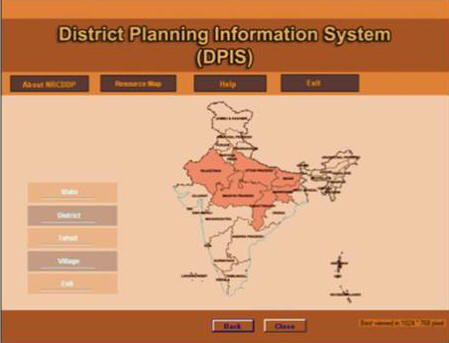Sustainable Development via
Information Technology
T
he Green Growth concept is a new alternative to standard economic growth. It promotes the use of natural resources in a sustainable manner. Quality environmental information is the key for green growth and it can be generated through an efficient information system base. The characteristics of an efficient information system are easy collection of data & information, analysis of indicators, effective representation and easy interpretation of data. Information technology has shifted the paradigm of the economy. For example, by promoting & creating more green jobs it is benefiting the environment and generating alternate livelihood (social aspect) options for people.
Generating green jobs, eradicating poverty and overcoming environmental issues will lead to sustainable development. These can be achieved by effective planning and monitoring through dynamic information systems. The planning system represents a powerful force for delivering social, economic and environmental value to the communities and it enhances and sustains a community’s quality of life. By informing forward planning, it has increasingly demonstrated that better decisions can be reached in the short, medium and long term.
Over the years Development Alternatives (DA) has prepared information systems that can be used to prepare district plans, adaptation plans for climate change, environment planning, decentralised renewable energy, and guidelines for mainstreaming climate & energy into district planning. The information systems of DA can be very broadly classified into three: (A) Village Information System; (B) State of Environment Reports and (C) Participatory Planning Tools.
The Village Information System is a Geographic Information System based informatics tool, which integrates village-level spatial and non-spatial data in a GIS environment for decentralised planning processes. Village level data/information related to infrastructure and natural resources is represented on interactive maps. This assists the decision-makers in planning, implementation and monitoring of various development activities by addressing the issues based on different indicators of sustainable development like economic, health, education, livelihood etc. The similar kind of information system can be used at block, district and state level, to tap the development undertaken in each programme or policy. Critical gaps can be identified and necessary steps to overcome the problem can be suggested.
The existing database on environment is very scattered, unsystematic and not interactive. Realising the need for creating a systematic and interactive database, the State of Environment (SoE) India was prepared and submitted to the Ministry of Environment and Forest in 2009. The SoE - India is largely a spatial representation of how people interact with the available natural resource base. The interactive SoE India Atlas provides convenient and easy access to spatial and statistical environmental information which can be used for addressing issues related to environmental sustainability which can further feed into policy advocacy. DA has also prepared State of Environment reports at the regional level like South Asia Environment Outlook, South Asia Priority Paper etc. The same methodology can also be followed at the regional level for addressing environmental issues and achieving sustainability through policies.
Development Alternatives has prepared a participatory panchayati tool kit under NREGS. The main purpose of the toolkit was to generate livelihood by identification of work for NREGS and monitoring it through a participatory process. A similar participatory tool kit was prepared for energy planning. These kind of participatory tools actually encourage bottom-top planning, which is also mentioned in the Manual for Integrated District Planning.
Recently released Rio +20 Outcome document also refers to linking environmental sustainability with poverty and livelihoods. These information systems have the potential to address sustainability issues and move towards the goal of sustainable development. q
K. Sweta
ksweta@devalt.org